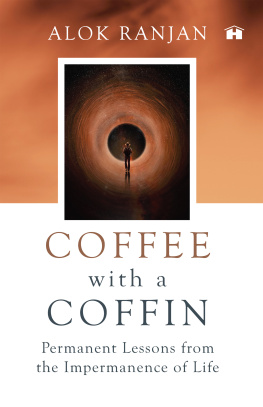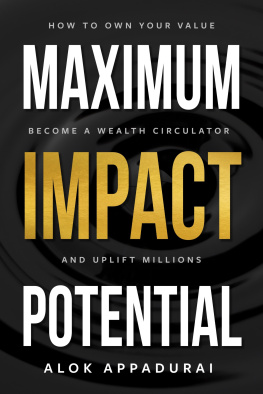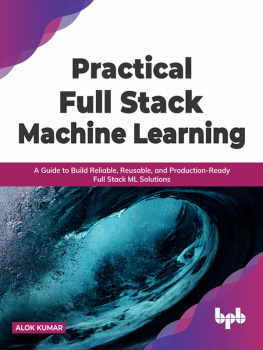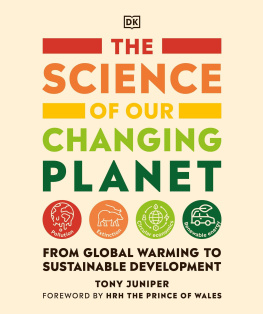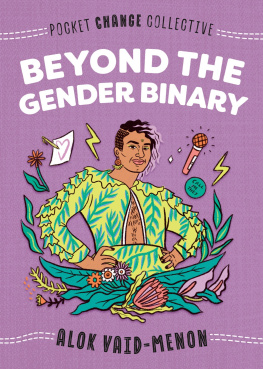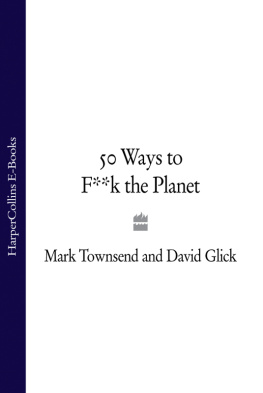THE
DOOMSDAY
HANDBOOK
THE
DOOMSDAY
HANDBOOK
50 Ways to the End of the World
Alok Jha

CONTENTS


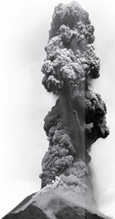
SPACE


Acknowledgments
INTRODUCTION
The End is nigh. Or, at least, our fascination with stories about The End is. Human history is stuffed full of doomsday tales and calamitous ends to the world as we know it. Prophets, sages and storytellers have told of fire and brimstone raining down from the sky, huge waves washing over the land and flooding everything out of existence or the hand of an unseen power that winks it all to nothing. Whatever the mechanism, The End is always the same: horrors befall our planet; everyone dies; our world becomes a wasteland, barren.
Often allied to the worlds great religions, The End (or judgment day) is usually a deitys way of cleansing our planet, to allow a fresh race of people who are morally purer to repopulate the resulting blank slate. Perhaps there is too much sin or debauchery and the time has come to start over. In this tradition, the most recent example is the belief that an ancient Mayan calendar has predicted the end of the world in 2012. It is safe to say that there is no credible evidence why that particular year should be any more dangerous than the ones preceding it.
These stories of fire and ash make good tales and do a decent job of stirring up the requisite fear and jeopardy. But made-up doomsday tales pale into nothing, creatively speaking, when contrasted with the poetry of what is actually possible. Look through the lens of science, and The End becomes much more interesting.
Start with the classics that could so easily destroy all life as we know it and without much that we can do about it: a huge asteroid hits the Earth, super-sized volcanoes unleash global blackouts, storms envelop the oceans and kill everything on the planet.
Our species has the unique ability in the history of life on Earth as the first that can remake our world. But we can also destroy it. All too real are the humancaused threats borne of climate change, excess pollution, depletion of natural resources and the madness of nuclear weapons. We tinker with our genes and atoms at our own perilnanotechnology, synthetic biology and genetic modification offer much potential in giving us better food to eat, safer drugs and a cleaner world. But they could also go wrong if misused.
The connected society we have created has brought us huge benefits in terms of trade, access to knowledge and education. But these same interconnections can spread viruses (human and computer) ever faster. A skilled terrorist cell (or intelligent machine) could compromise power systems, steal or delete financial data and wreck supply chains, all of which are crucial for the modern world to function. A failure in a digital system in the United States can spread to China or Australia in seconds.
We think we live in a safe part of the galaxy at least. But our solar system is not necessarily the haven we think, especially for a delicate planet with life. Just because it is quiet now, doesnt mean we wont pass through showers of debris that could wreck the planets. That a rogue white dwarf might not smash through the Sun and knock all the planets into deep space. Or that a rogue black hole will not wander past and rip everything into ribbons of atoms before engulfing it all with its inexorable gravity. Or what if we really do run into aliens and they turn out to be hostile?
We live (and always have lived) in the shadow of possible annihilation and, ironically, that shadow gets ever darker and longer the more light we shed on to knowing about our universe. You can only know that the world could pop out of existence in a bout of vacuum decay if you know about quantum particles and the big bang. We are beginning to understand that what we conceive of as time might one day disappear from our universe, giving us no sense of movement or direction. And let us hope never to run into a clump of the deadly strangelet matter anywhere in the universe. This is a substance nominally so very close to being made of the same stuff that makes up everything we see around us. Yet it is, instead, something coldly destructive of our way of life.
Have heart, though. Whichever scientific approach you take to trying to get to The End, you can be assured that only a small handful of them actually mean the end of the Earth itself. The end of the world, our world of humans, is relatively easy to countenance. Our planet, however, will be just fine after the demise of humans or its many millions of other species of life. That is, of course, until the Sun eventually explodes to several times its own size in a few billion years and swallows the Earth whole.
Mass Extinction

There is a disturbing secret about the fortune of life on Earth. It sits in the background as we marvel about the diversity of organisms we see around us today; about how some chemicals in a warm pond started to replicate billions of years ago and evolved, slowly, into trilobites, dinosaurs, trees, snails, grass, monkeys, mushrooms and humans. That secret is death.
In the stunning 3.5-billion-year history of life on Earth, of the 4 billion species that are thought to have ever existed, 99 percent are extinct. On our planet, extinction is the norm. Throughout history, plants and animals have come and gone as the climate and the environment have changed around them. Some thrived in cold, others only in hot and humid. Species have appeared and disappeared as their suitability for their niches has waxed and waned, all of it inextricably linked to the fortunes and conditions of our shared planet.
Five times in the past 500 million years, though, the steady rate of attrition has reached unassailable heights. Something, no one knows for sure what, turned the Earth into exactly the wrong planet for life, and at those points, most of the worlds plants and animals disappeared. During each mass extinction, more than 75 percent of living species died off in the geological blink of an eye.
Since the end of the last mass extinction, 65 million years ago, things have been relatively quiet. Extinctions have continued, but only at the normal, background rate. Evidence from ecologists and conservationists in recent decades, however, is pointing toward an inevitable conclusion for the 21st century: that the Earth is getting ready for another of its periodic catastrophic destructions of life. The sixth mass extinction is upon us, and the twist this time is that we know exactly what is causing it.
The five big ones
In 1982, David M. Raup of the Field Museum of Natural History in Chicago and Jack Sepkoski of the department of geophysical sciences at the University of Chicago published a study in the journal
Next page

